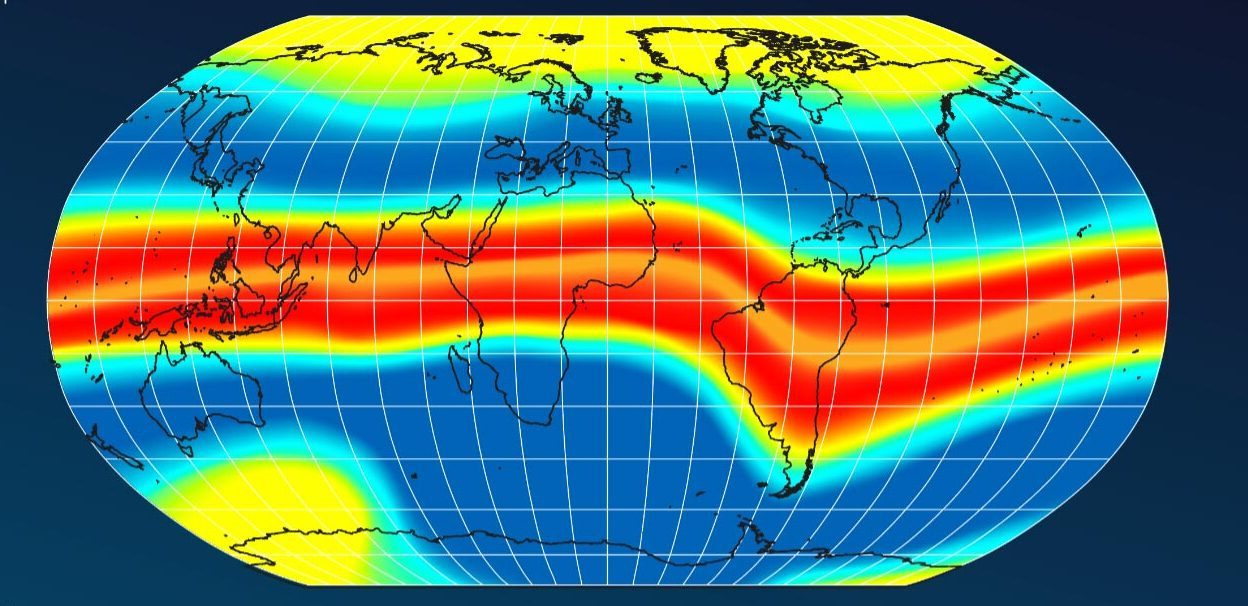
What are ionospheric disturbances? These are disruptions in the ionosphere, a layer of Earth's atmosphere filled with charged particles. Causes of ionospheric disturbances include solar flares, geomagnetic storms, and cosmic events. When these disturbances occur, they can affect radio communications, GPS signals, and even power grids. Why should you care? Because these disruptions can impact daily life, from navigation systems to communication networks. Understanding ionospheric disturbances helps in predicting and mitigating their effects. In this blog post, we'll explore 20 intriguing facts about these fascinating atmospheric phenomena. Buckle up for a journey through the charged layers of our atmosphere!
Key Takeaways:
- Ionospheric disturbances, caused by solar activity and natural events, can disrupt technology like GPS, radio communication, and even power grids, impacting daily life and safety.
- Scientists use ground-based instruments, satellites, GPS networks, and computer models to study and predict ionospheric disturbances, helping to mitigate their effects on technology and human activities.
What Are Ionospheric Disturbances?
Ionospheric disturbances are disruptions in the ionosphere, a layer of Earth's atmosphere filled with charged particles. These disturbances can affect communication, navigation, and even weather patterns. Here are some fascinating facts about these phenomena.
-
The ionosphere is located about 50 to 600 miles above Earth's surface. It contains ions and free electrons, which are crucial for radio communication.
-
Solar activity, like solar flares and coronal mass ejections, can cause ionospheric disturbances. These events release massive amounts of energy and particles into space.
-
Geomagnetic storms, caused by solar wind interacting with Earth's magnetic field, can also disrupt the ionosphere. These storms can last from hours to days.
-
Ionospheric disturbances can affect GPS signals. When the ionosphere is disturbed, GPS accuracy can degrade, leading to navigation errors.
-
Radio waves can be absorbed or reflected by the ionosphere. During disturbances, this can lead to poor radio communication or complete signal loss.
How Do Ionospheric Disturbances Affect Technology?
Technology heavily relies on stable ionospheric conditions. Disruptions can have significant impacts on various systems.
-
Satellite communication can be disrupted by ionospheric disturbances. Signals traveling through the ionosphere can become distorted or delayed.
-
Power grids can be affected by geomagnetic storms. Induced currents from these storms can cause transformers to overheat or fail.
-
Aviation relies on radio communication and GPS for navigation. Ionospheric disturbances can lead to communication blackouts and navigation errors, posing risks to flight safety.
-
Military operations can be impacted. Reliable communication and navigation are crucial for military activities, and ionospheric disturbances can compromise these systems.
-
Underwater communication using very low frequency (VLF) signals can also be affected. These signals rely on the ionosphere for long-distance transmission.
Natural Phenomena and Ionospheric Disturbances
Natural events can trigger ionospheric disturbances, affecting both the environment and human activities.
-
Earthquakes can cause ionospheric disturbances. The release of energy during an earthquake can generate waves that travel through the atmosphere, affecting the ionosphere.
-
Volcanic eruptions can inject ash and gases into the atmosphere, leading to ionospheric disturbances. These particles can alter the ionosphere's composition and behavior.
-
Lightning strikes can create localized ionospheric disturbances. The intense energy from lightning can ionize the surrounding air, affecting the ionosphere.
-
Auroras, or Northern and Southern Lights, are visible manifestations of ionospheric disturbances. These colorful displays occur when charged particles from the sun interact with the ionosphere.
-
Tsunamis can generate atmospheric waves that propagate into the ionosphere. These waves can cause disturbances detectable by satellite-based instruments.
Research and Monitoring of Ionospheric Disturbances
Scientists continuously study and monitor the ionosphere to understand and predict disturbances.
-
Ground-based instruments, like ionosondes, measure the ionosphere's density and composition. These instruments help scientists monitor ionospheric conditions in real-time.
-
Satellites equipped with specialized sensors can detect ionospheric disturbances from space. These satellites provide valuable data for research and forecasting.
-
The Global Positioning System (GPS) network helps monitor ionospheric disturbances. By analyzing GPS signal delays, scientists can infer changes in the ionosphere.
-
Radio telescopes can observe ionospheric disturbances. These telescopes detect changes in radio wave propagation caused by ionospheric irregularities.
-
Computer models simulate ionospheric behavior. These models help scientists predict how the ionosphere will respond to various factors, improving our understanding and forecasting abilities.
Final Thoughts on Ionospheric Disturbances
Ionospheric disturbances, while complex, play a crucial role in our daily lives. These disruptions can affect communication systems, GPS accuracy, and even power grids. Understanding the causes, such as solar flares and geomagnetic storms, helps scientists predict and mitigate their impacts.
By studying these phenomena, we gain insights into space weather and its effects on Earth. This knowledge not only aids in technological advancements but also enhances our preparedness for potential disruptions.
Next time you experience a GPS glitch or a radio signal drop, remember the ionosphere's invisible influence. Staying informed about these disturbances empowers us to better navigate the challenges they present.
In essence, ionospheric disturbances remind us of the intricate connections between our planet and the cosmos. Keep exploring, stay curious, and appreciate the wonders of our ever-changing atmosphere.
Frequently Asked Questions
Was this page helpful?
Our commitment to delivering trustworthy and engaging content is at the heart of what we do. Each fact on our site is contributed by real users like you, bringing a wealth of diverse insights and information. To ensure the highest standards of accuracy and reliability, our dedicated editors meticulously review each submission. This process guarantees that the facts we share are not only fascinating but also credible. Trust in our commitment to quality and authenticity as you explore and learn with us.
